Hello everyone!
The following is a little something I wanted to share with all of the generous, creative and intelligent people that subscribe to my substack newsletter.
This is the time of year when we are finding ways to preserve any remaining homegrown chili peppers, fruit, homegrown brassica crops (such as Cabbage and Kale) and root crops from our autumn harvests for the winter.
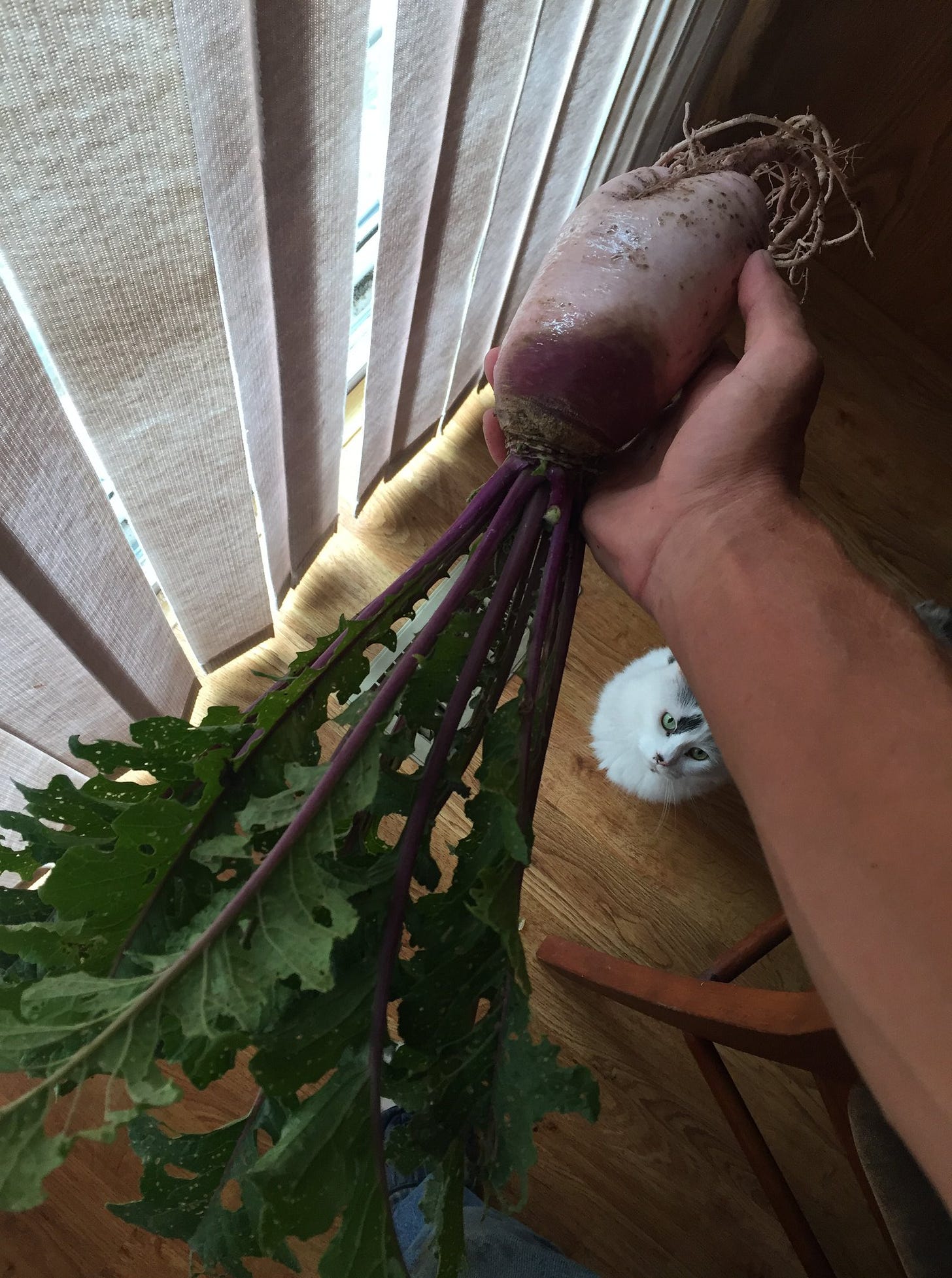


Kimchi is one of our favorite ways to combine many of those crops into a single medicinally synergistic, nutritionally potent and delicious preserve.
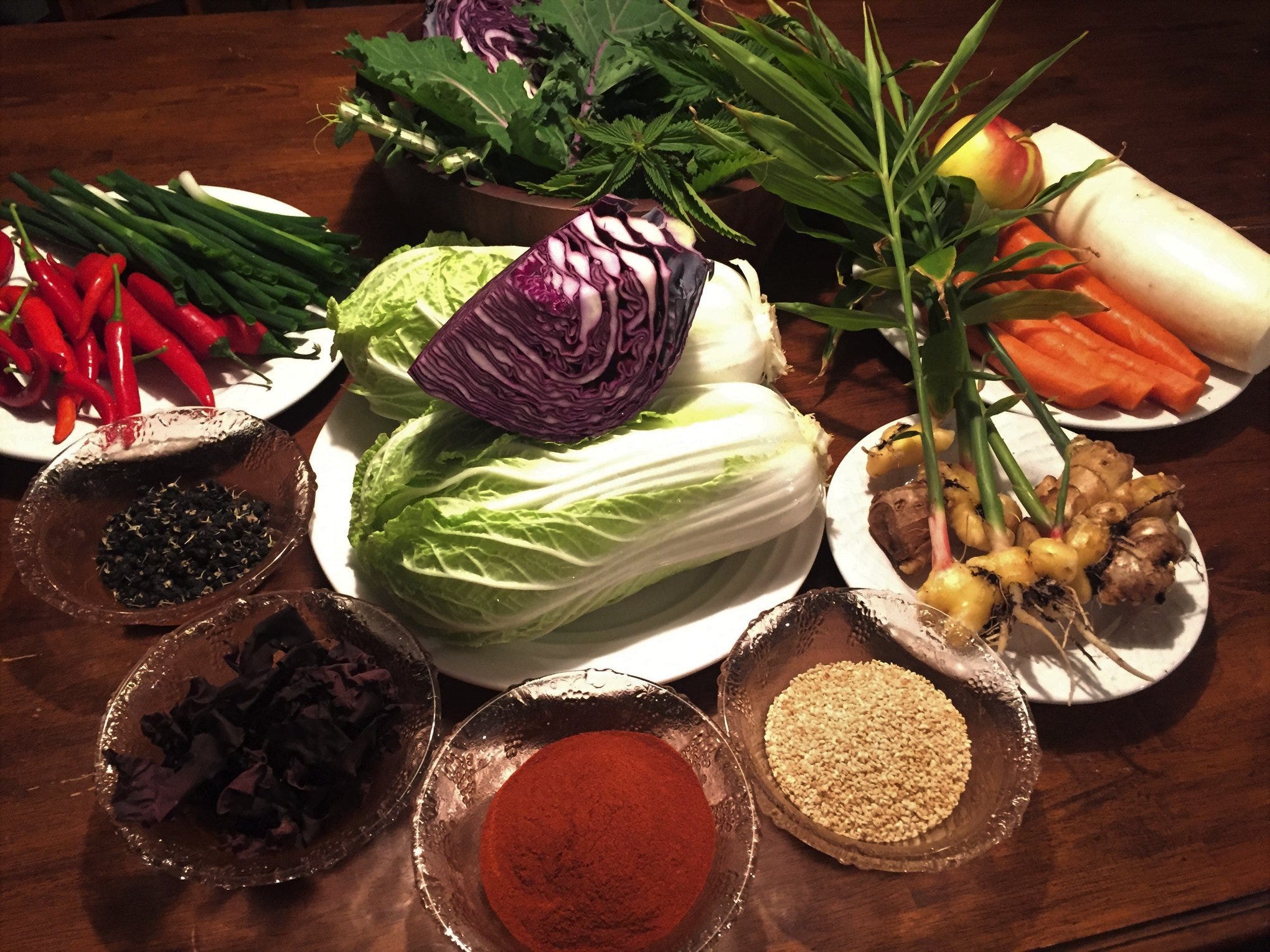
The fact that all you need to ferment veggies for creating recipes such as this is salt, a knife, strong hands (and/or a blunt veggie bruising tool) and a fermentation vessel makes this low-tech food preservation method a powerful skillset to develop in the context of emergency preparedness.
I hope this will inspire you to try creating some of your own medicinal preserves with locally sourced and/or homegrown ingredients. Each step we take to boycott Big Pharma as well as Big AG and instead embrace Mother Earth's medicine cabinet is a conscious choice to move into health sovereignty and realign our creative energy with the regenerative capacity of the living planet.
This anthocyanin rich Kimchi I will be sharing the recipe for below is a mixture of vibrant and nutritious fermented superfoods that come together into a well rounded Unami centered sensory experience.
Due to the presence of ginger, turmeric, goji berries, hot chilis, cabbage, anthocyanin and probiotics in this preserve it is a food that supercharges the immune system greatly reducing the chance that invasive organisms (the common cold, flu, pathogenic bacterial infections etc) can survive in the body. Therefore raw kimchi is not only a delicious food but also a powerful medicine.
Get ready to embrace the power of..
Purple Dragon Chi'
Ingredients:
- 1 medium Napa cabbage, about 2 lbs (savoy, green or any combo works too) chopped into 1 inch squares
- 1 medium purple cabbage, sliced thinly
- 1 large daikon radish (or 2-3 turnips) cut into 1 inch long ‘match stick’ sections or roughly grated
- 4-6 tbsp sea salt or another coarse natural salt (4 tbsp if fermenting at a temperature of 16c-27c (60-80f) or 5-6 tbsp if fermenting at a temp of 27 celius plus (80f plus)
- 2 purple carrots, sliced thinly
- 1 inch section of turmeric, finely grated or diced (or ½ tsp powdered)
- water and extra salt as needed for brine
- 1 or 2 sweet apples or pears (I used fuji apple for ours), chopped or grated
- 1-2 small white onion(s), chopped
- 2 1/2 inch section of ginger, chopped or grated
- 2- 4 cloves garlic diced (optional)
- 6 or more tablespoons Korean red chili powder (gochugaru) or 2 tablespoons each cayenne & Hungarian paprika
- 8-12 scallions (green onions), sliced 1 inch
- 4-6 large kale leaves, sliced thinly
- at least one cup of chopped/crushed hot peppers of your choice (we used Aji Charapita, Bhut Jolokia and Beuna Mulata peppers in ours, which is partially why I used the word “Dragon” in the name of the recipe, as those are very hot peppers and that results in a fiery kimchi, but if you do not want your kimchi to be super spicy, you can use some mellow peppers and it will still turn out great! :) )
- a handful of dried goji or elder berries (diced)
- ¼ cup Wakame (dried kelp/seaweed)
- ½ cup pan toasted sesame seeds
optional bonus ingredients:
- 1-3 thinly sliced shiitake mushrooms, sauteed until cooked and cooled before being added to kimchi mixture
-Chaga tea used to make part of the brine (for an extra smokey umami punch of medicinal awesomeness)
- 1/4 cup grated horseradish root
- 1/2 a small beet, grated
- 1/4 cup flax or cannabis/hemp seeds
Instructions:
Begin by removing any damaged or bruised outer leaves from your cabbages, add them to your compost bin. Rinse the cabbages with some clean water and then slice each one in half and then quarters (lengthwise).
Reserve 4-6 sections of the thickest outer leaves and set aside. Proceed to cut out the core of each quarter of cabbage and reserve for either using as a fermentation weight or add to the compost bin.
Slice the purple cabbage into thin ribbons and add to several large wooden mixing bowls (or one huge wooden vessel) in even proportions.
Cut the napa cabbage into one inch squares and add to the bowls as well. Add about half the salt to the bowls a little bit at a time, massaging the salt into the cabbage with your clean hands to encourage the juices to come out of the cabbage and open up the cell walls to make favorable conditions for fermenting.
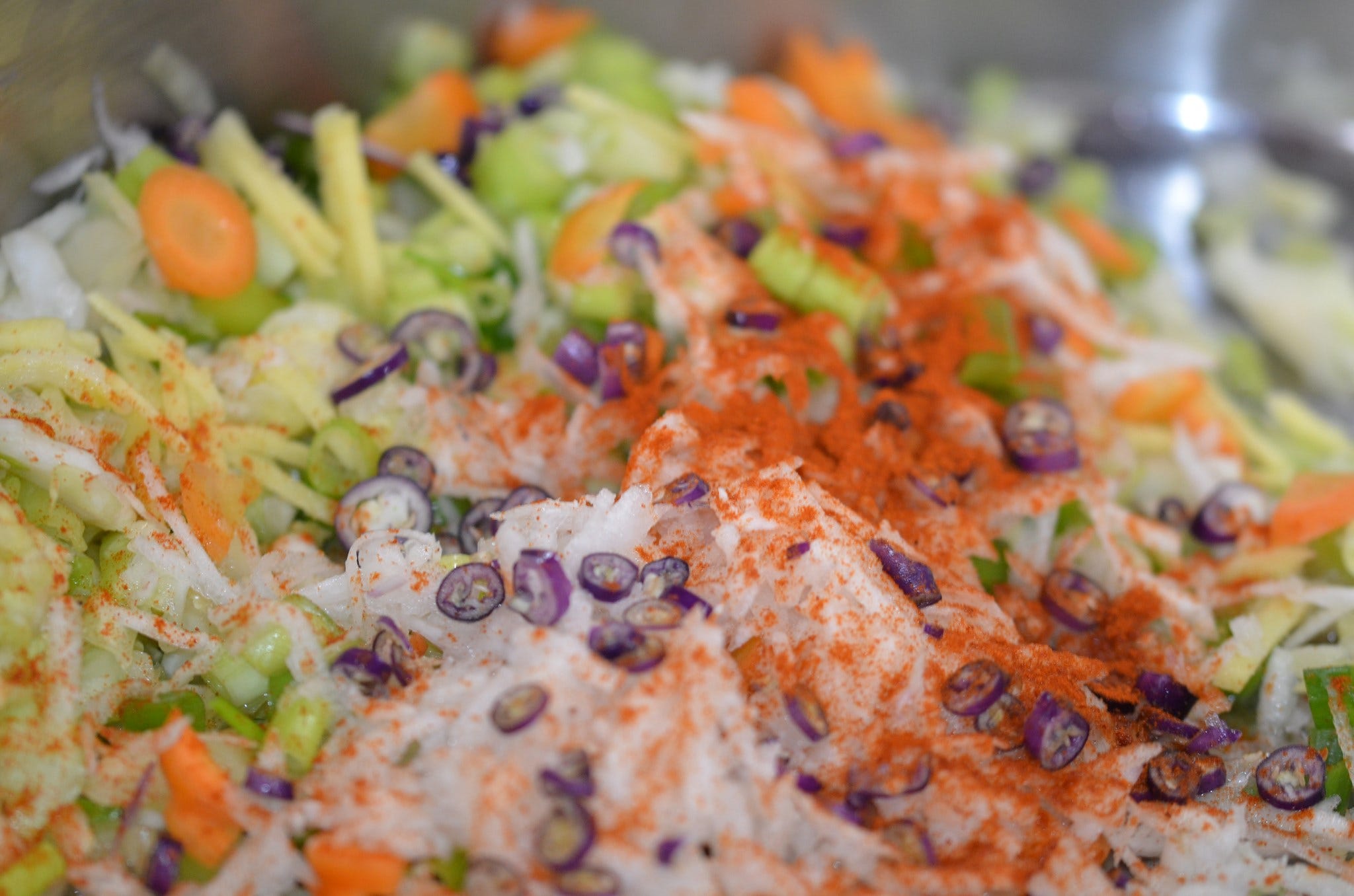
At this stage you will want to mix around the cabbage and use a solid pounding tool (like a mortar or mallet) to press the cabbage down and continue to bruise it until you can take the cabbage in your hand, squeeze it and juice pours out.
Add all the remaining ingredients and salt, continuing to massage with hands and occasionally use a pounding tool to release juices.
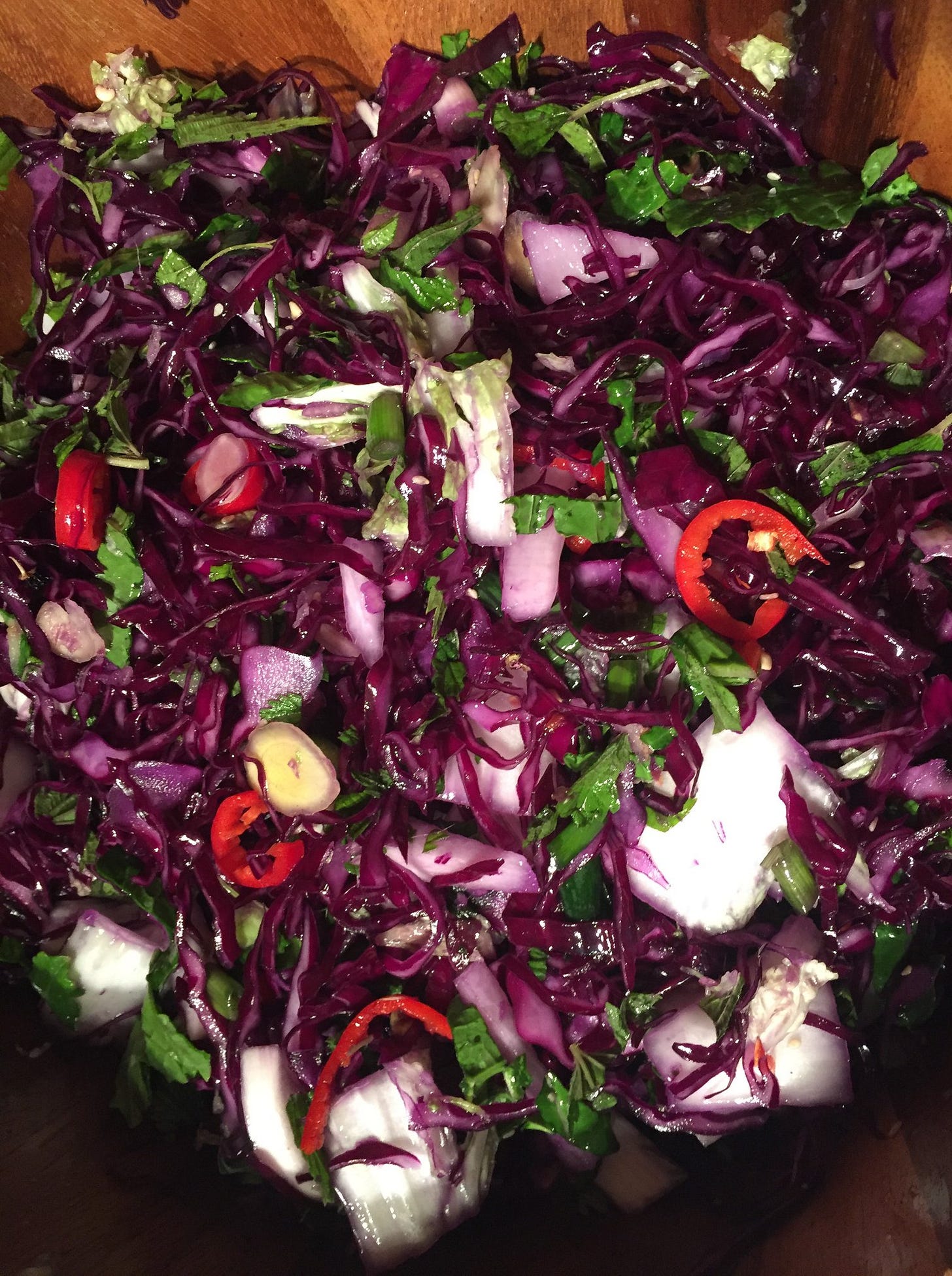

Once well mixed and bruised (after appox 5-10 minutes working finished mixture with hands and crushing tool) begin adding the purple dragon chi mixture to your fermentation vessels.
Once you are about 2 and a half – 3 inches from the top of your fermentation vessel, add the reserved thicker outer leaf cabbage sections in an arrangement that holds all the ingredients down. Add something that will serve as a fermentation weight (to press down on the cabbage leaves and keep ingredients submerged while they ferment).
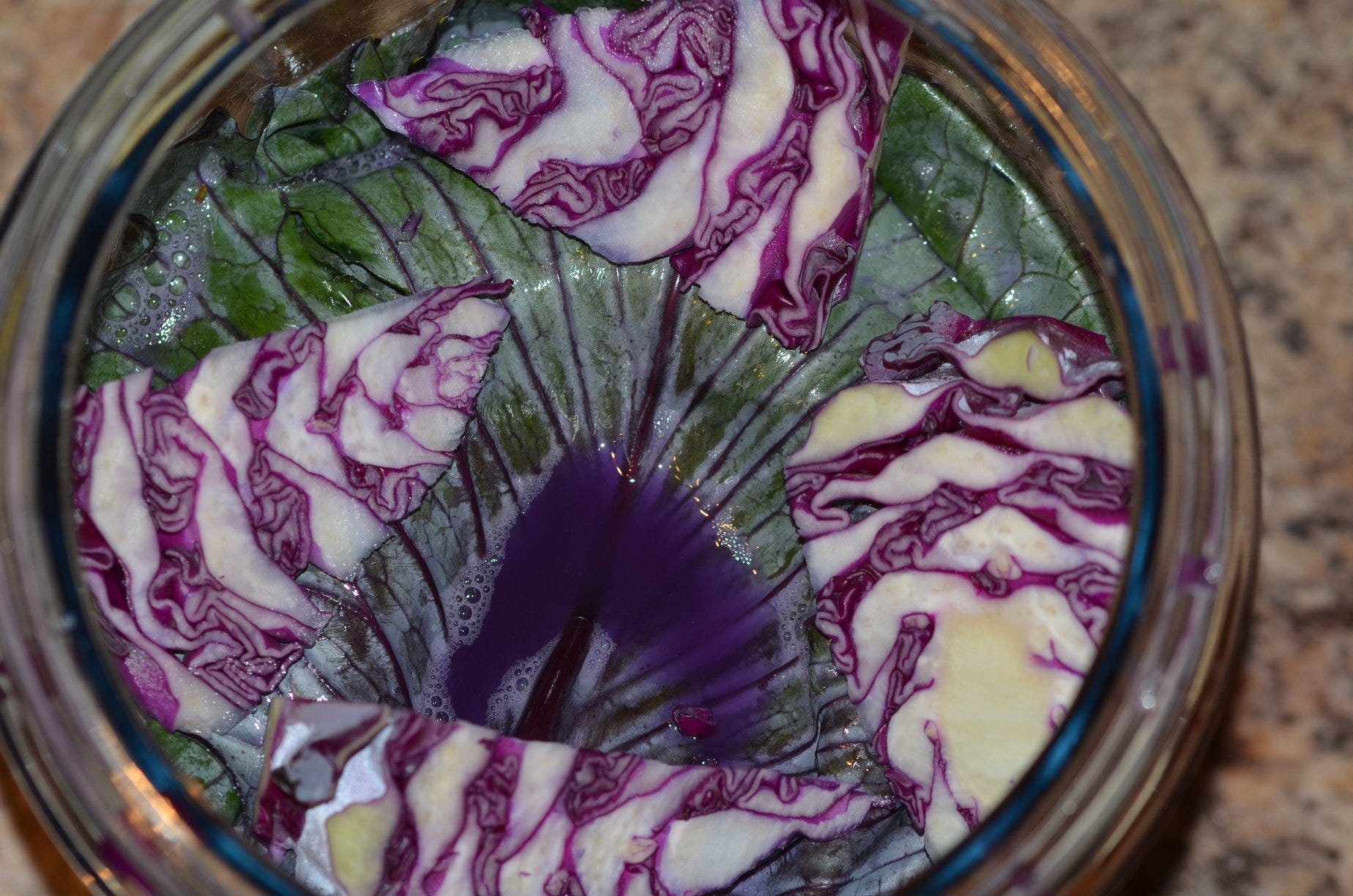
I have used shot glasses, cabbage cores, circular thick sections of daikon radish, sterilized quarts crystal stones, glasses with water in them and also glass fermentation weights that are specifically made for that purpose (and they all served the intended purpose just fine as long as I added enough brine to keep things submerged). Press down on the fermentation weights with your hands and if all the ingredients and weights are not totally submerged in the juices make some light salt brine (by dissolving 1 and a half tsp sea salt per one cup (250ml) of water, or chaga tea) and add to each fermentation vessel until all ingredients and fermentation weights are completely submerged (leaving at least one inch head space for expansion that will occur via CO-2 expulsion).
Place your fermentation vessel(s) in a place that is at room temperature, out of direct sunlight on a plate or something that can catch juices that may spill out if you did not leave enough headspace for expansion. Check on the ferment daily and if you did not use an airlock be sure to loosen the lid briefly each day to release the build up CO-2 (“burping the jar”) that is produced by the fermenting process.
Begin tasting after 5-7 days and when you have reached a level of tanginess that you enjoy (fermenting at room temp for up to 2 weeks) place in the fridge or root cellar to slow fermentation (where the purple dragon chi will last for 4-8 months depending on temperature and how well the ingredients stay submerged in the brine).
This superfood preserve goes well as a side to rice, noodles, eggs, beans, or makes an amazing sandwich spread if mixed with some mayo in a blender. You can also make delicious sauces and salad dressings with the tangy flavorful brine. I eat a spoonful each morning in the late fall, winter and spring and it gives me an extra boost of energy, nutrition and to optimize the function of my innate immune system to be ready to face whatever the world brings my way.
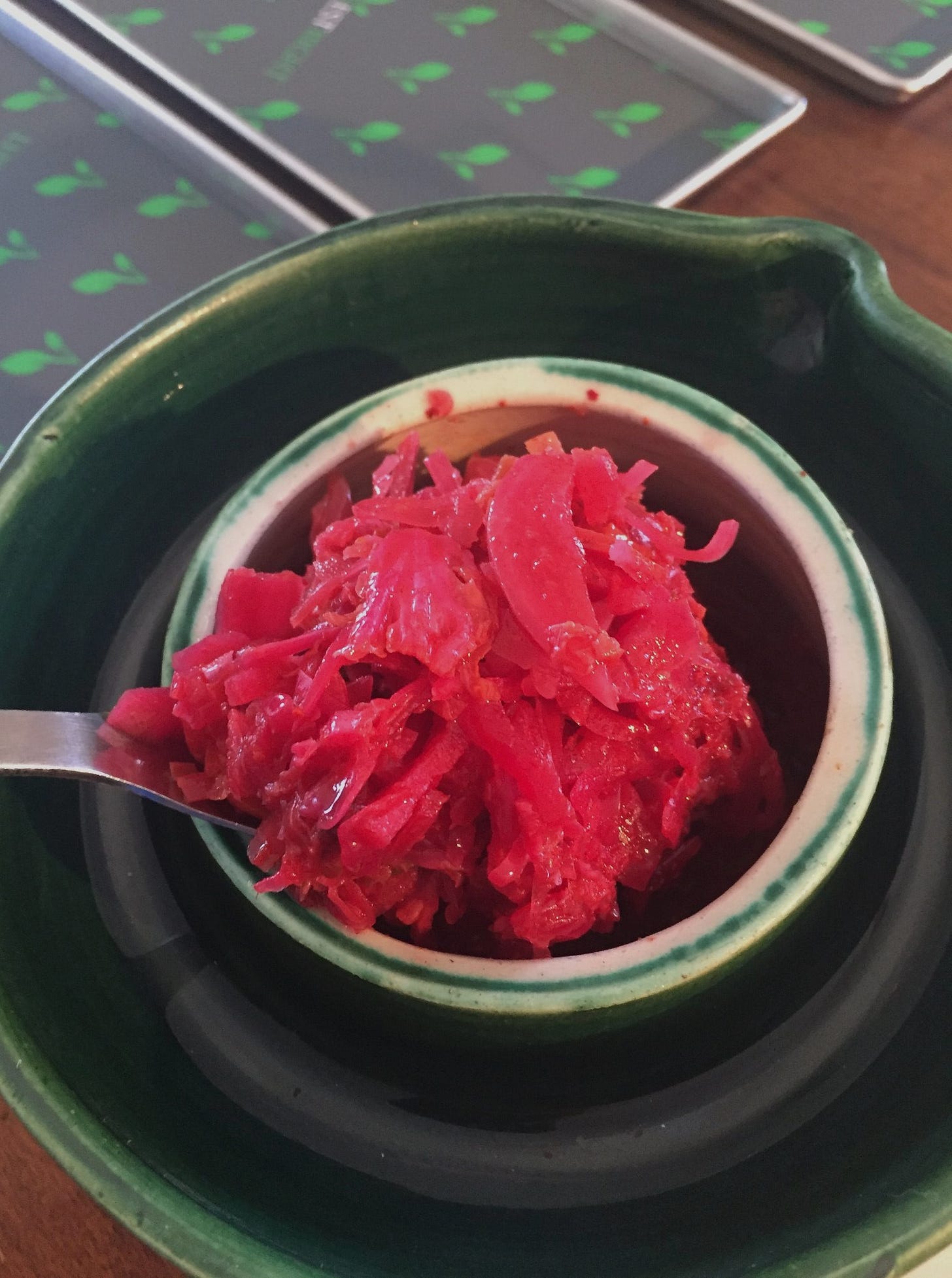
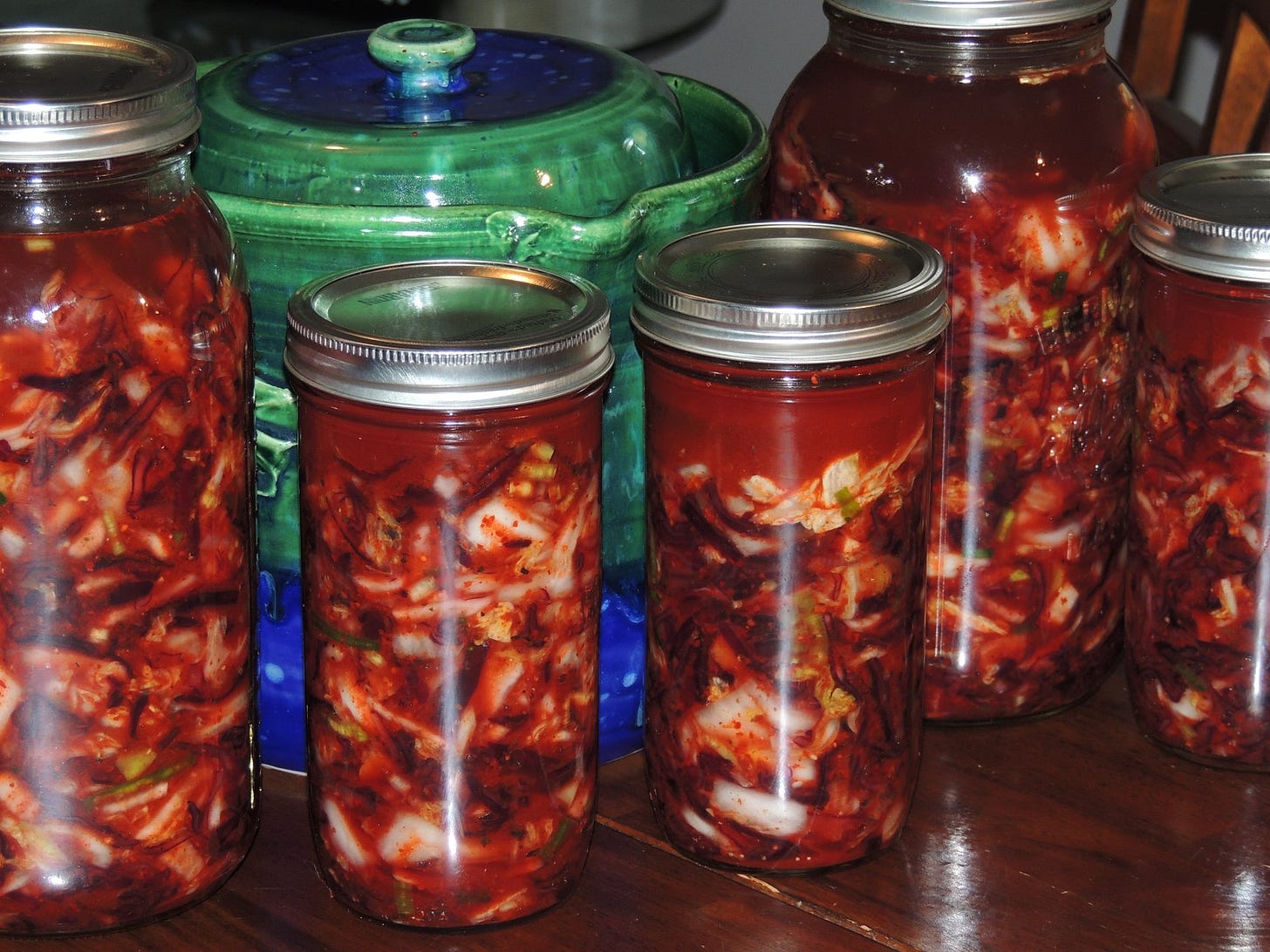
Do not feel like you have to follow the ingredient list religiously, just use locally available veggie/herb/spice substitutions that equal a similar volume to that which I list above and use a purple cabbage, Black Goji berries and/or some purple fleshed carrots if you want to make the end result a deep purple color.
If you try making your own version of this kimchi I would love to hear how it turns out!
Happy fermenting! 😊
“The problem with killing 99.9 percent of bacteria is that most of them protect us from the few that can make us sick.
Given the 'War on Bacteria' so culturally prominent in our time, the well-being of our microbial ecology requires regular replenishment and diversification now more than ever.
Wild foods, microbial cultures included, possess a great, unmediated life force, which can help us adapt to shifting conditions and lower our susceptibility to disease. These microorganisms are everywhere, and the techniques for fermenting with them are simple and flexible.
To ferment your own food is to lodge an eloquent protest--of the senses--against the homogenization of flavors and food experiences now rolling like a great, undifferentiated lawn across the globe. It Is also a declaration of independence from an economy that would much prefer we were all passive consumers of its commodities, rather than creators of unique products expressive of ourselves and the places where we live.
Resistance takes place on many planes. Occasionally it can be dramatic and public, but most of the decisions we are faced with are mundane and private. What to eat is a choice that we make several times a day, if we are lucky. The cumulative choices we make about food have profound implications. Food offers us many opportunities to resist the culture of mass marketing and commodification. Though consumer action can take many creative and powerful forms, we do not have to be reduced to the role of consumers selecting from seductive convenience items. We can merge appetite with activism and choose to involve ourselves in food as co-creators.”
― Sandor Ellix Katz (from The Art of Fermentation: An In-Depth Exploration of Essential Concepts and Processes from Around the World, you can also support Sandor’s work and get a hardcopy from Sandor's friends at Short Mountain Cultures here)
The recipe for Purple Dragon Chi above is from my recently published book (cover shown in image below).

For those interested in purchasing a physical copy of the book you can do so through this link:
https://recipesforreciprocity.com/shop/softcover/


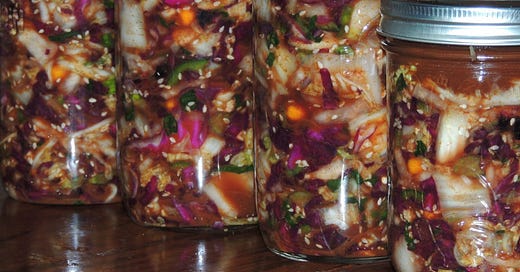




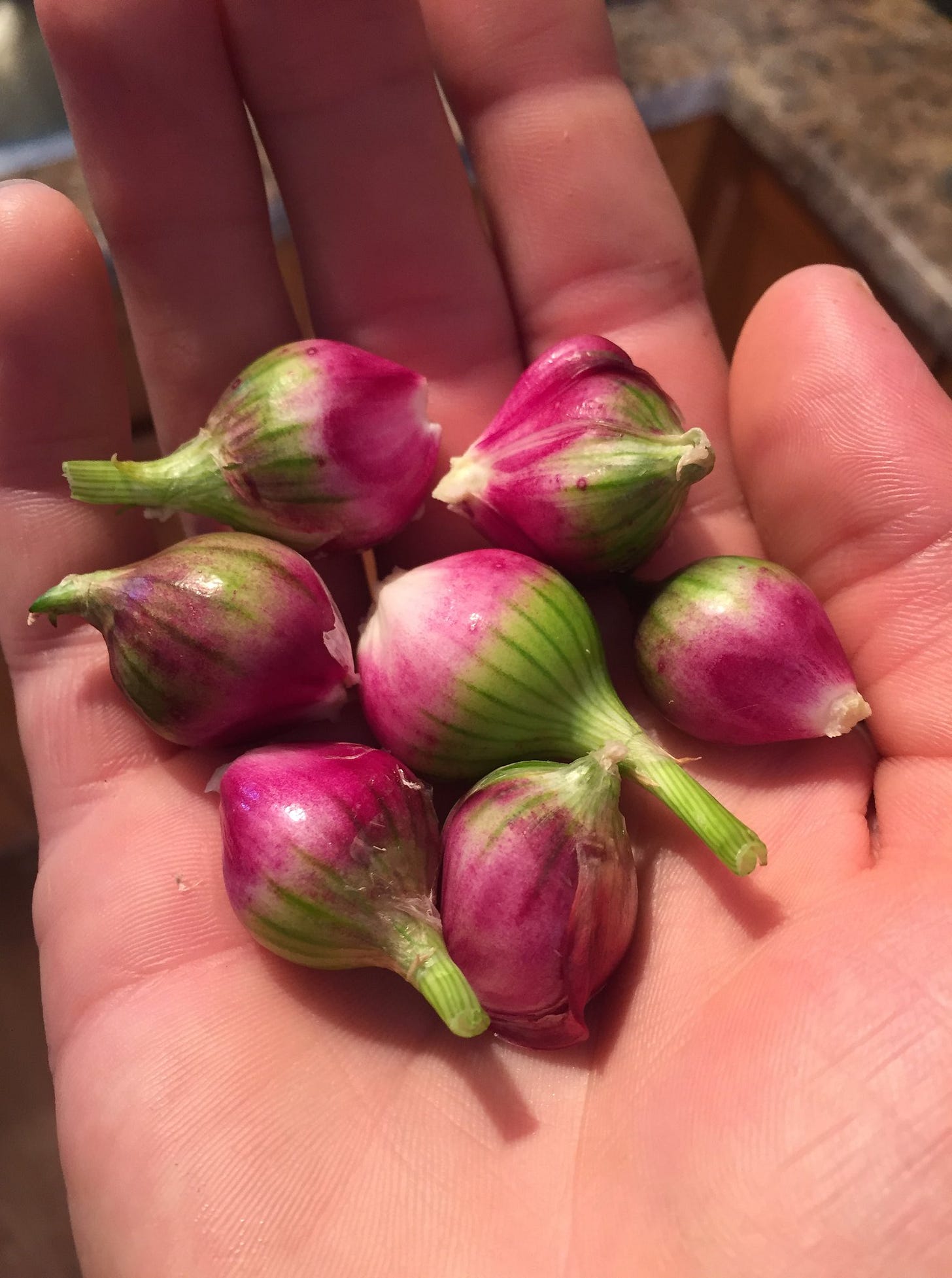

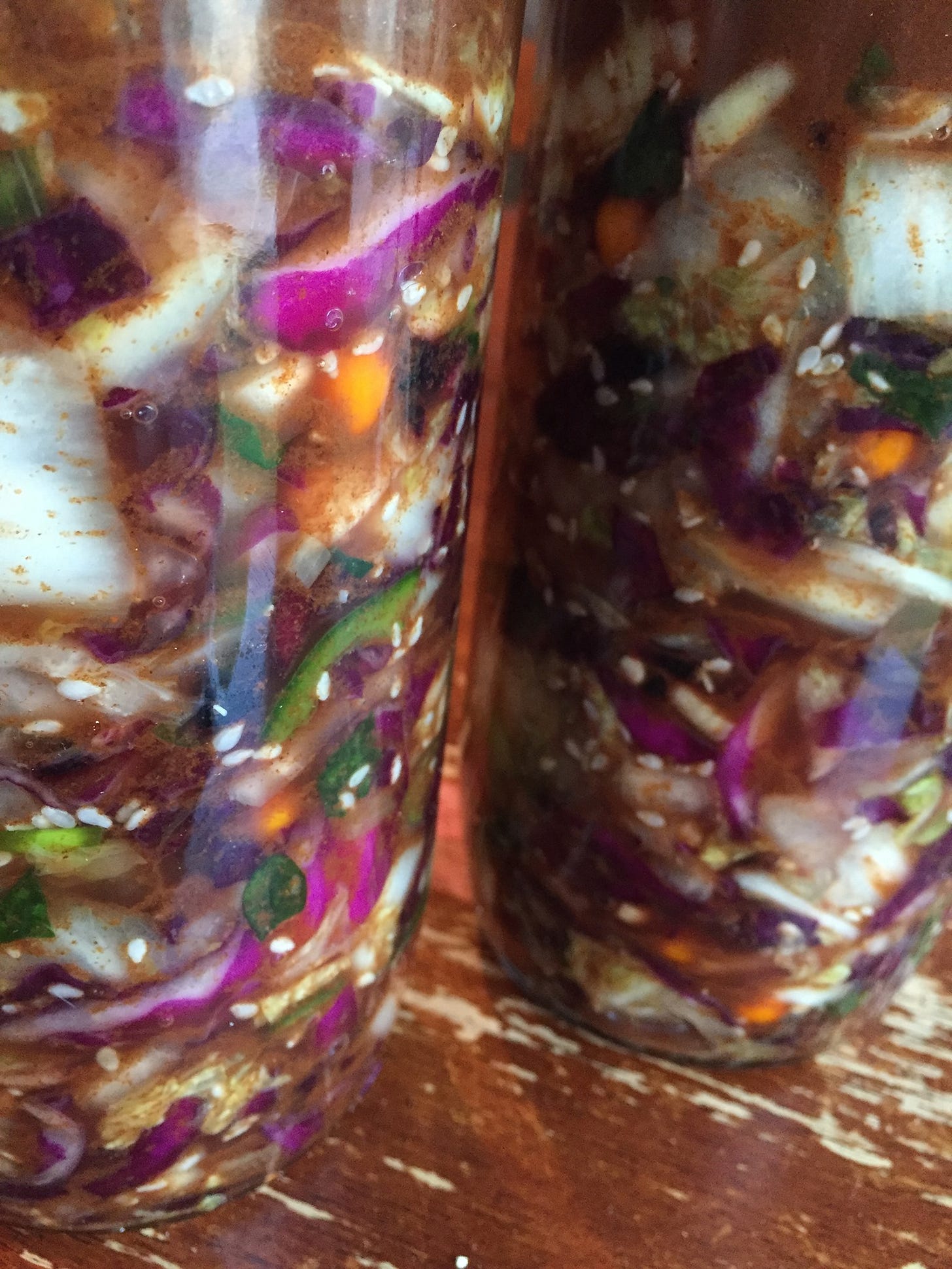
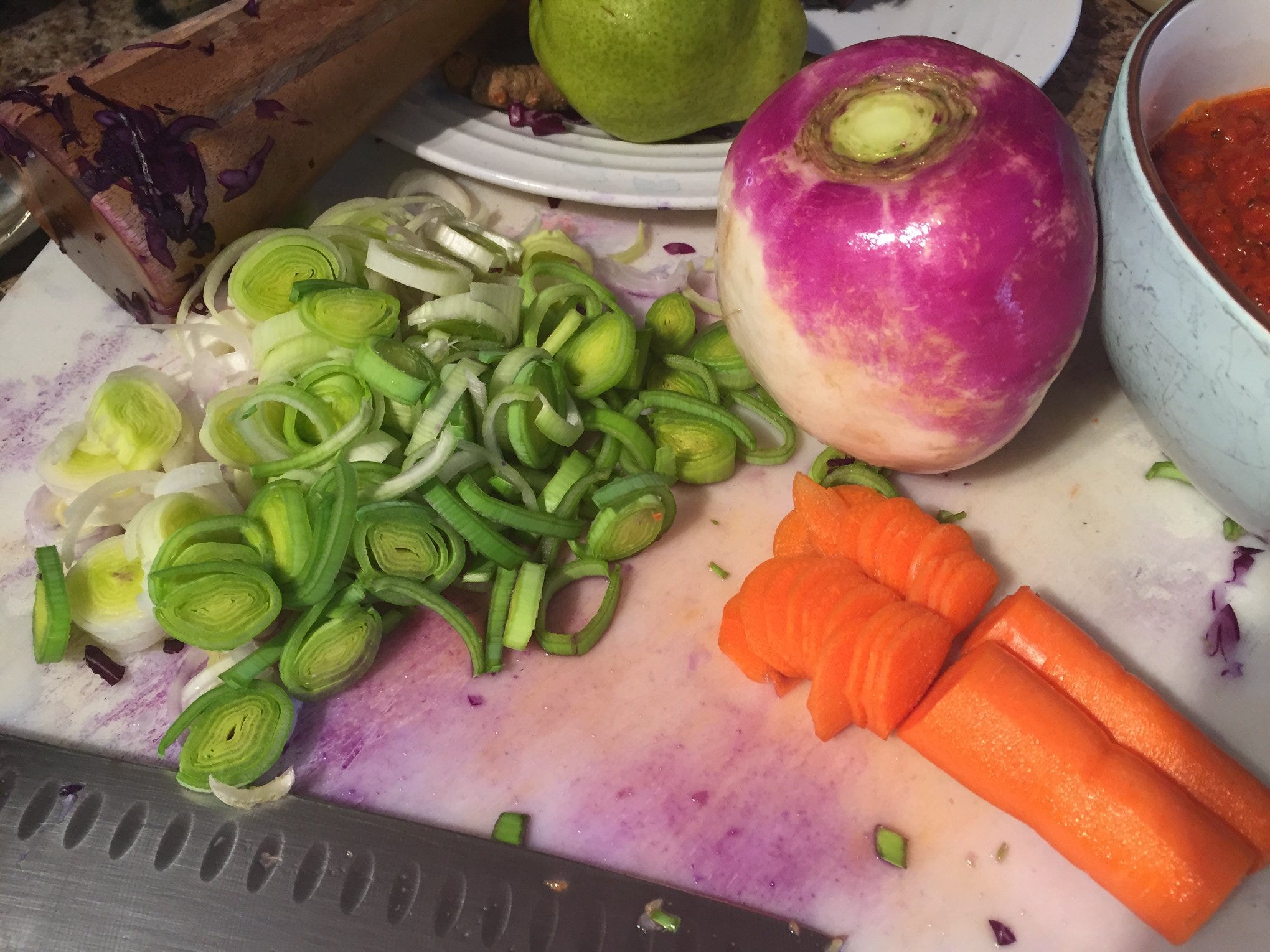
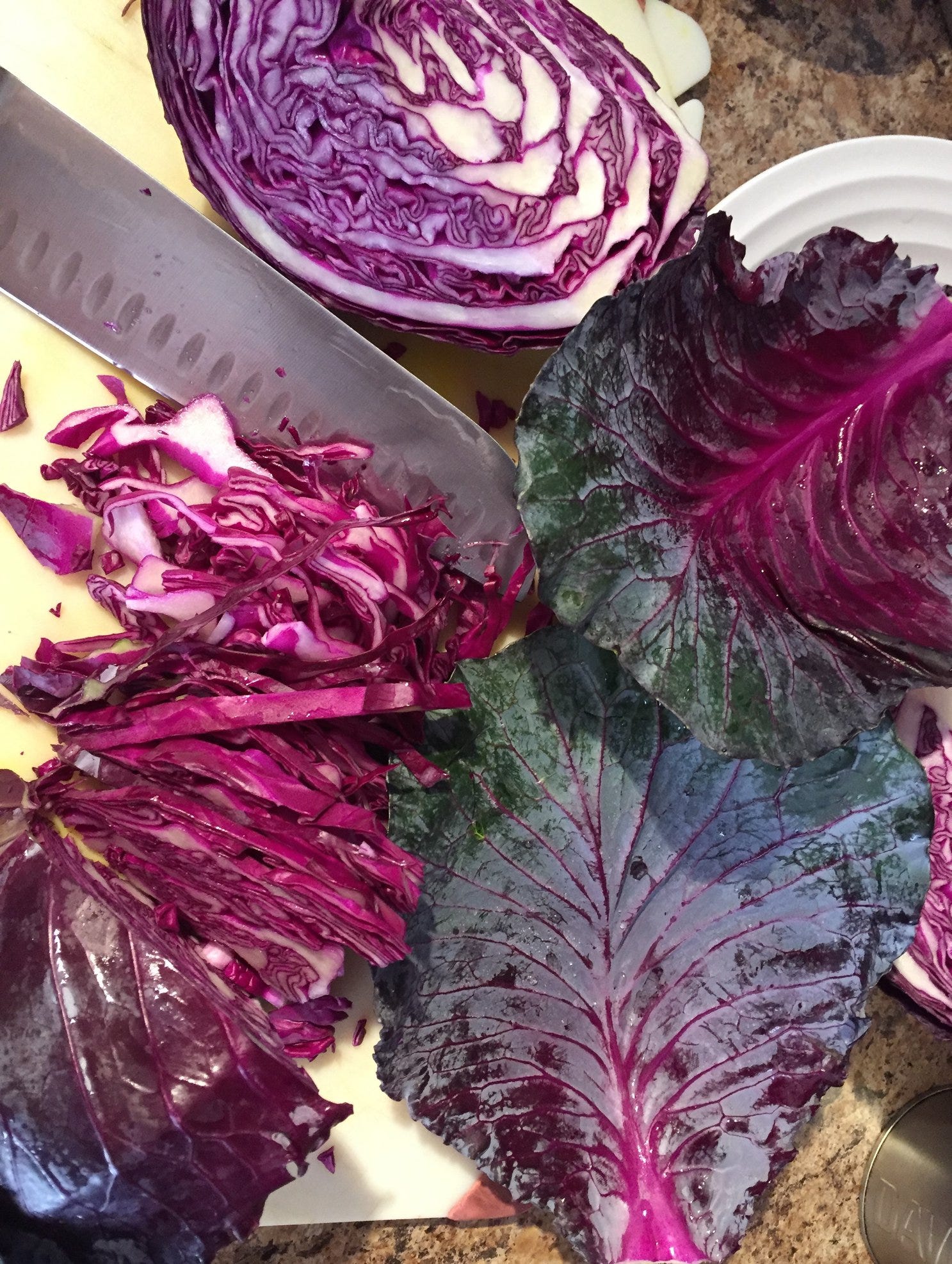
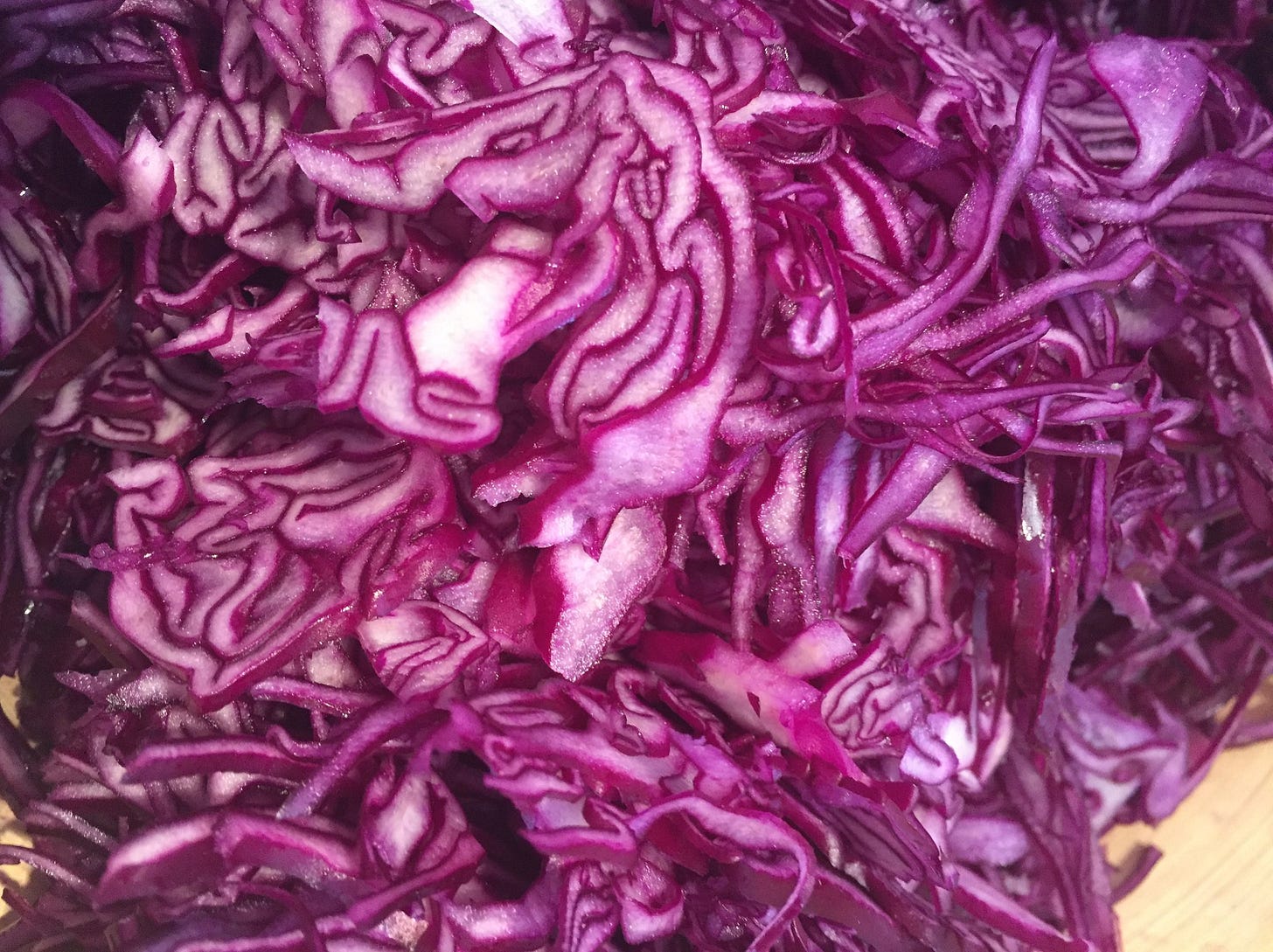
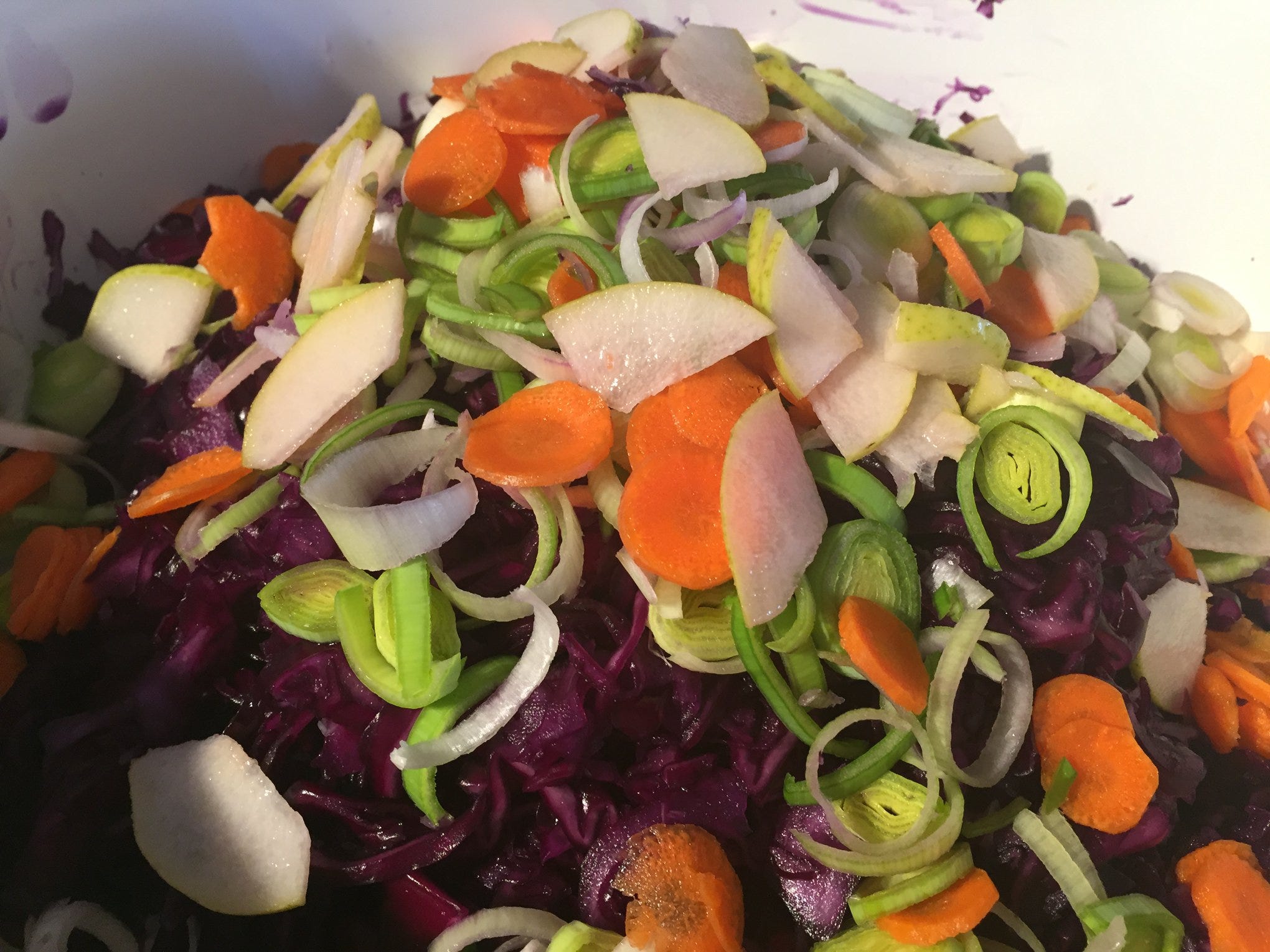

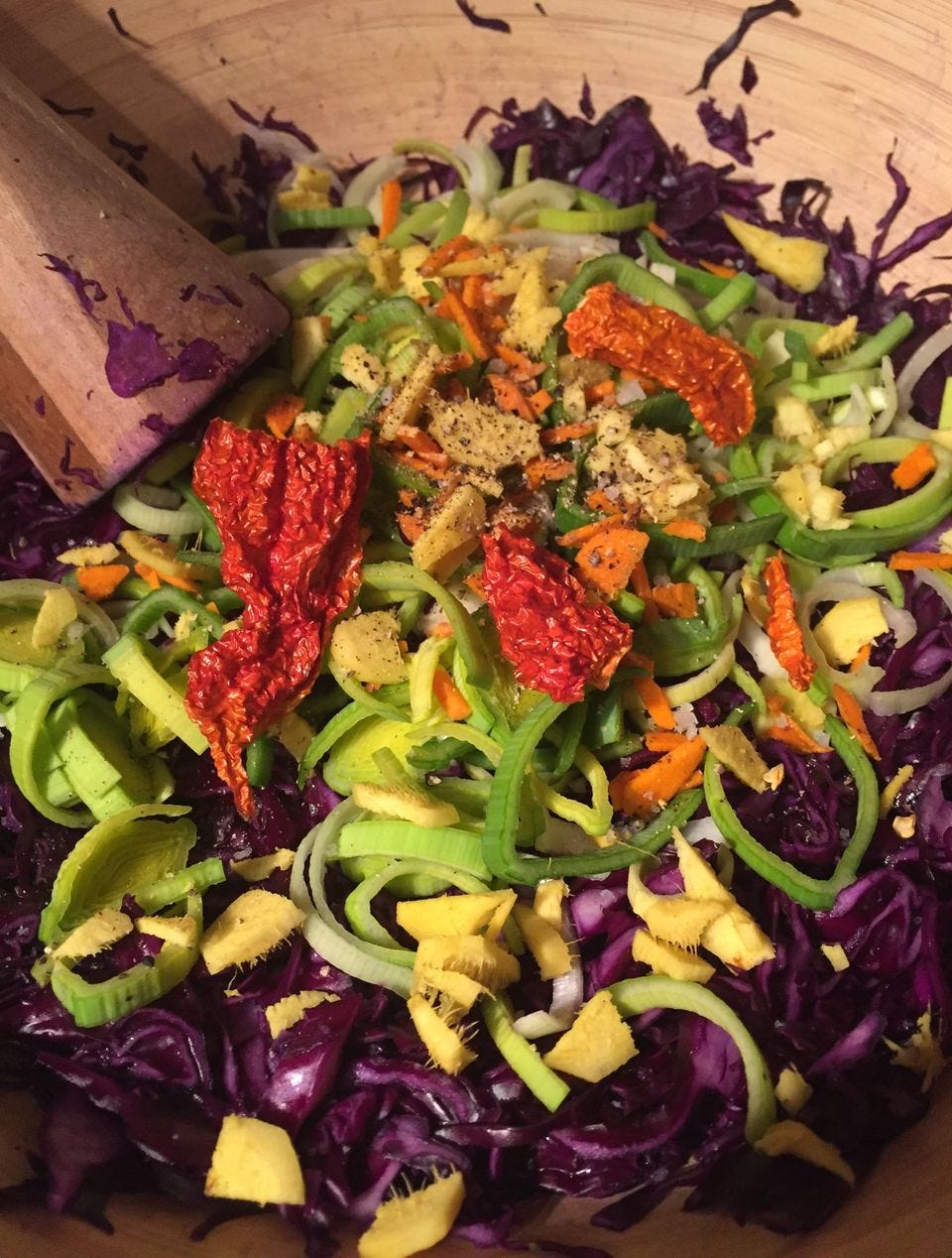
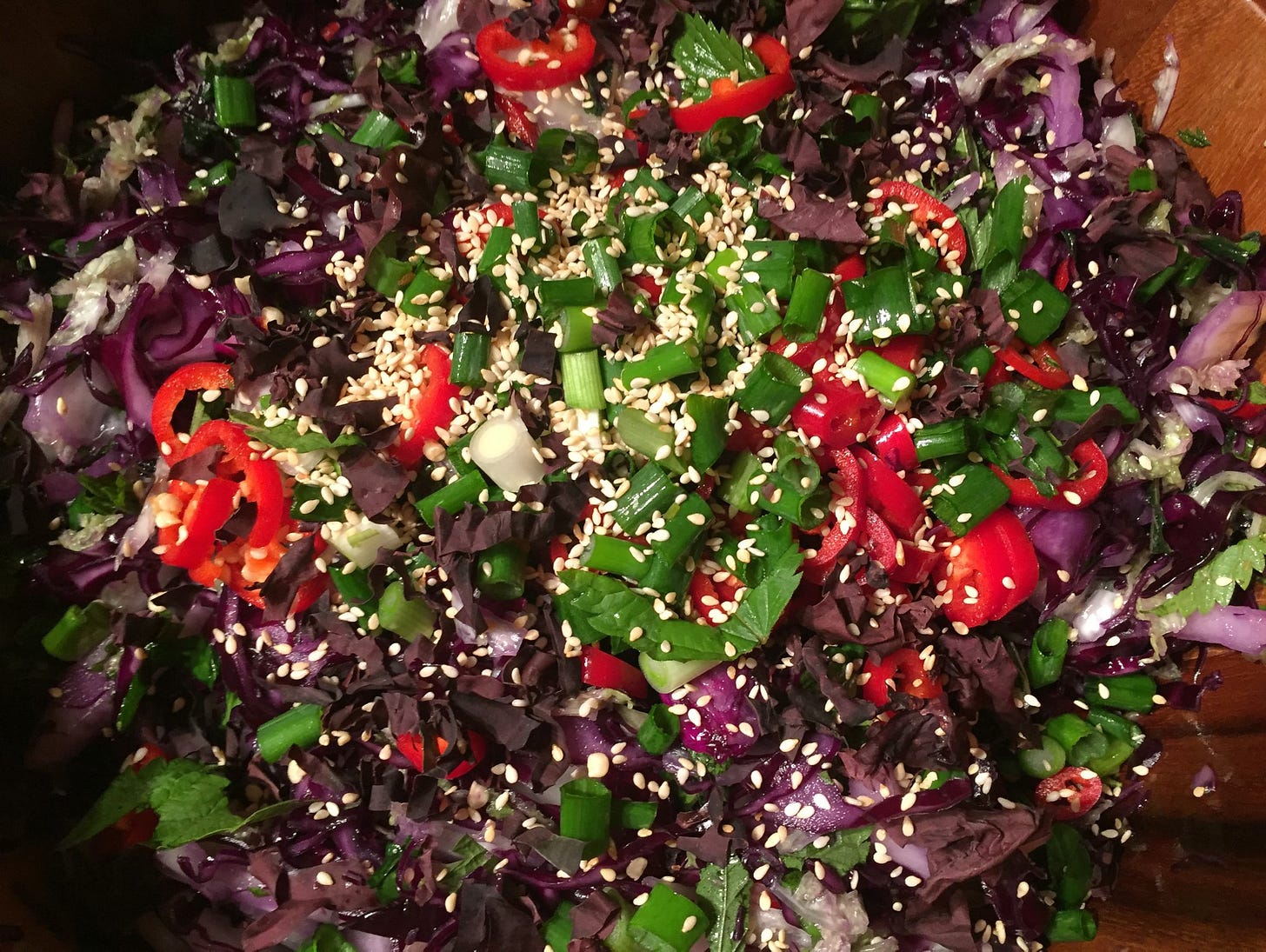


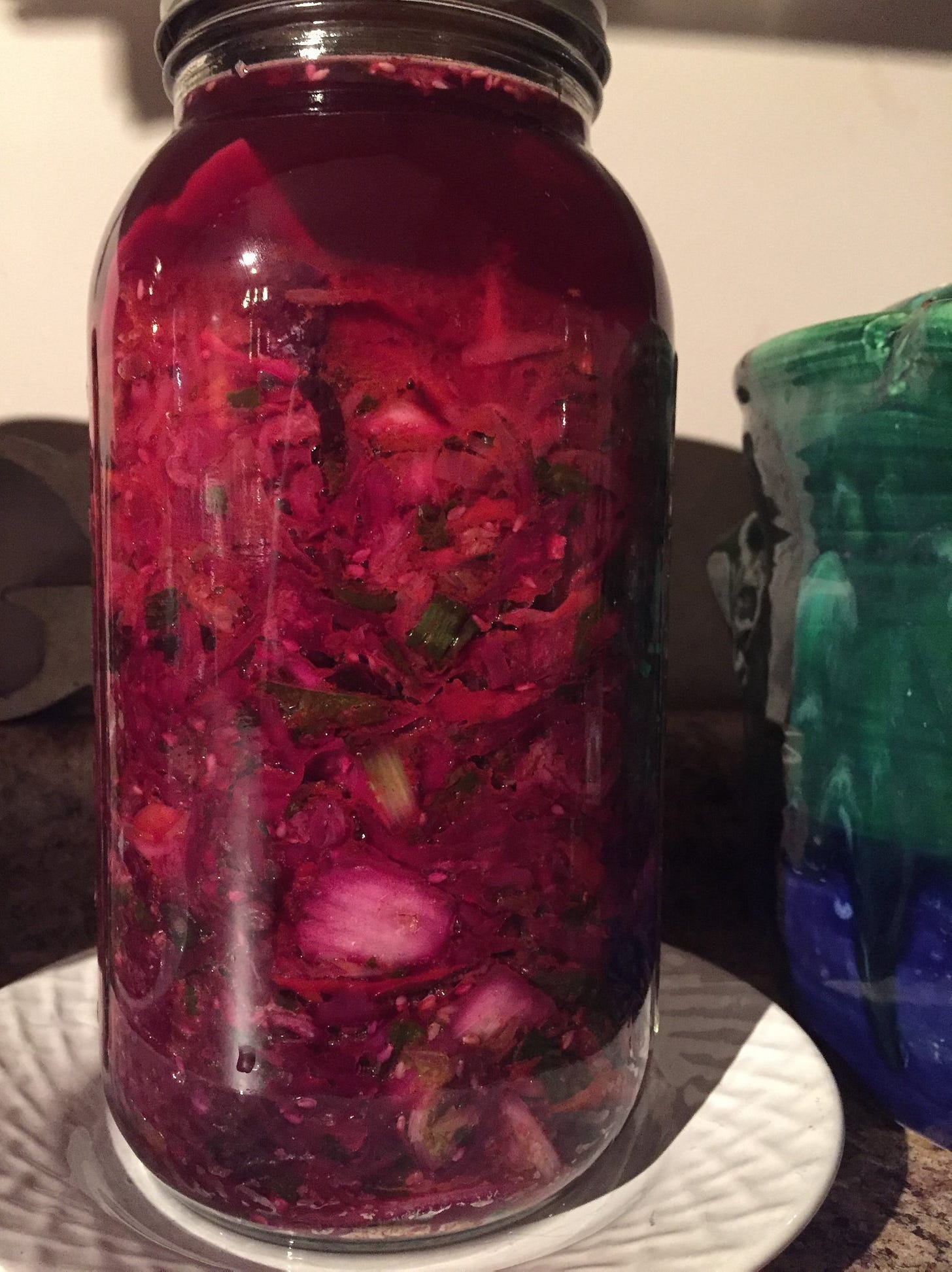
Wow, this sounds phenomenal. And I just loved the photo of your stunning, just beautiful, ingredients. So fresh that they’re probably squeaky, love it. We grow the Egyptian onions, too. My grandmother rips them out of the ground and throws them in the compost and then I sneak back there later and replant some in my section and eat or freeze the rest. I cleaned loads of the little “seed” bulbs to ferment but had to stop and put them in the fridge because my baby needed me, and then as the days went by time got away from me so I never got to it and ended up eating them as is instead. What a great recipe, I’ve never made kimchi because growing up I didn’t like it but I think I would like it now, since I love my fermented beets and turnips and sauerkrauts. Thanks for the inspiration and the lovely post. LOVED that you empowered us by mentioning how this small act of making our own foods and letting food be thy medicine means one less dollar towards big Ag and big Pharma. Food and bodily sovereignty, baby. May I add in here that using cash instead of cards in all transactions is another simple way that can have big effects against the globalist agenda if everyone joined in. Cheers
Great recipe! So many good ingredients in that purple dragon. It took me years to master the traditional kimchi to get the fizzy bites of fermented goodness. I'll try this out just to experience what it might taste like. Don't see any fish sauce in yours. Maybe less offensive to the nose perhaps? Thanks!